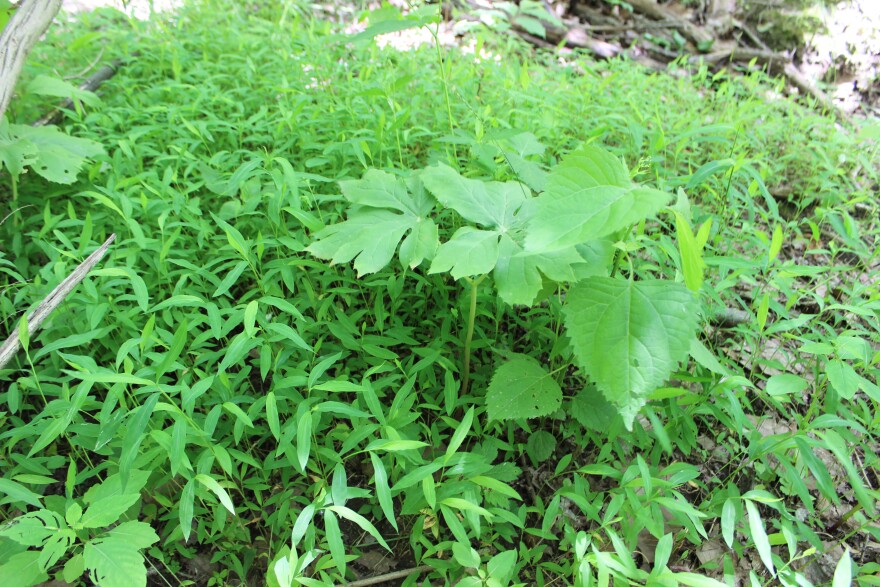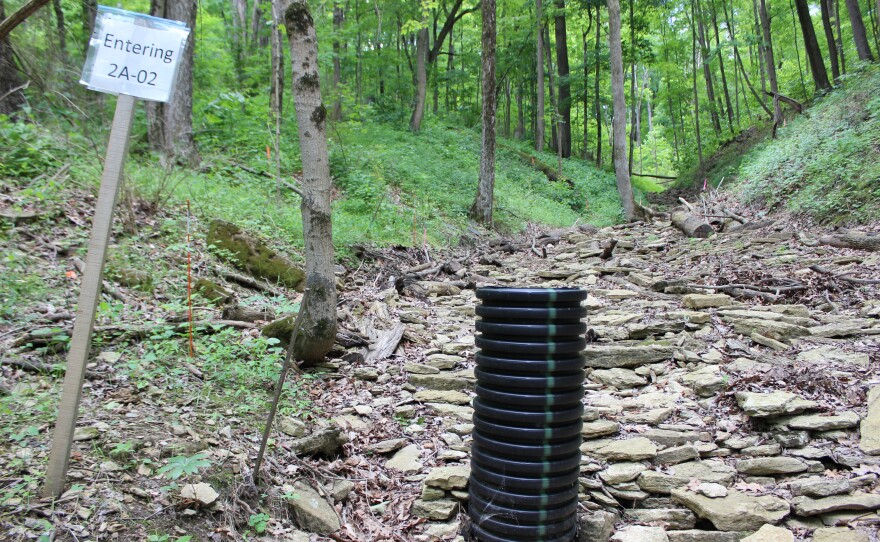It's been a little over two years since an oil pipeline running through a nature preserve in Colerain Township ruptured, sending hundreds of gallons of oil cascading down a stream into a wetland and threatening to reach the Great Miami River. As Great Parks of Hamilton County Board of Park Commissioners will hear Thursday afternoon, the clean-up is complete, but the restoration is just beginning.
To be clear, there's still oil at Oak Glen Nature Preserve. You can see it in tiny ripples on pooled water along the creek bed. If you get close enough, you can smell it as it seeps out of the hillside.

Bret Henninger is Natural Resources Director with Great Parks of Hamilton County. On a recent weekday afternoon, spokeswoman Jennifer Sivak and I joined him for a hike along the creek to the pipeline break point.

On March 17, 2014 neighbors reported a diesel smell coming from the preserve. An underground line rubbing against shale had ruptured. Sunoco Pipeline estimates 450 barrels, or nearly 20,000 gallons of oil were released. The company says roughly 19,000 were recovered.
Henninger says Great Parks is coming to grips with the fact that there's going to be oil at the site for possibly a decade or longer.
"How far do you chase the oil and how much damage do you do," he asks. "Or do you come up with a plan that gets as much as you can and then we sort of rely on natural processes and collection of that oil over time. We don't want to go up on the hill and destroy ten acres of forest to get all of that oil out of the rock. It just doesn't make sense to do that. That's not good for the ecology long term or short term."
Rehabilitation is now turning to restoration.
Work is set to begin in mid-July on a three phase plan. Step one is returning the stream to its natural state. High powered hoses used to flush the oil widened the stream, causing erosion, and sediment loss. Invasive plants flourish along the stream, likely tracked in unknowingly by clean-up crews.


Henniger points to a low grassy weed called Japanese stiltgrass. "You can see it overwhelms the native plants. It just gets so thick it crowds them out and competes for nutrients and water and soil and sunlight. So that's one of our big concerns about long term restoration is making sure we get the invasives under control."
Phases two and three will include removing a dam built to contain the oil, and roads built to reach and repair the break and clean the site. They'll also restore a prairie used for staging so rare lark sparrows that once called it home might return.

Great Parks is working with the Ohio EPA and the U.S. Fish and Wildlife Service. Sunoco Pipeline is funding the clean up and ongoing environmental monitoring, but it won't say how much it's spending.
During our visit, two contractors were collecting water samples to check plankton concentrations. A scientist has laid stone tiles along the hillside to attract cave salamanders so he can count them.
The company says it has an aggressive, on-going integrity management plan for the pipeline that includes regular inspections and testing.
The woods are quiet. Trees rustle in the wind, there's an occasional bird call and we spot one frog. Mostly amphibians and crayfish are known to have died from the spill. Those that lived were captured and cleaned before being returned to the wild.
After hiking about half a mile, Henniger stands atop some rocks in a grassy right of way.
"Right now we're standing right on where the pipeline broke," he says. "And you can see, there's no evidence of the pipeline anymore. It's been fixed and covered with rock. But you can see the difference in the stream."

Spokeswoman Jennifer Sivak remembers standing here that spring morning in 2014 watching crews rush to stop the thick black oil oozing down the creek.
"I think it breaks my heart to see wildlife and habitat displaced; to know that something this beautiful had to endure this," she says. "But I'm confident with the team that we have, like Bret and all the agencies that he is working with to make that happen. But to me, I don't think we have a lot of this in Hamilton County so what we do have, we need to protect."
Great Parks is doubtful Oak Glen will reopen any time this year, but there's hope for 2017. Monitoring, however, will go on for many, many more years.





